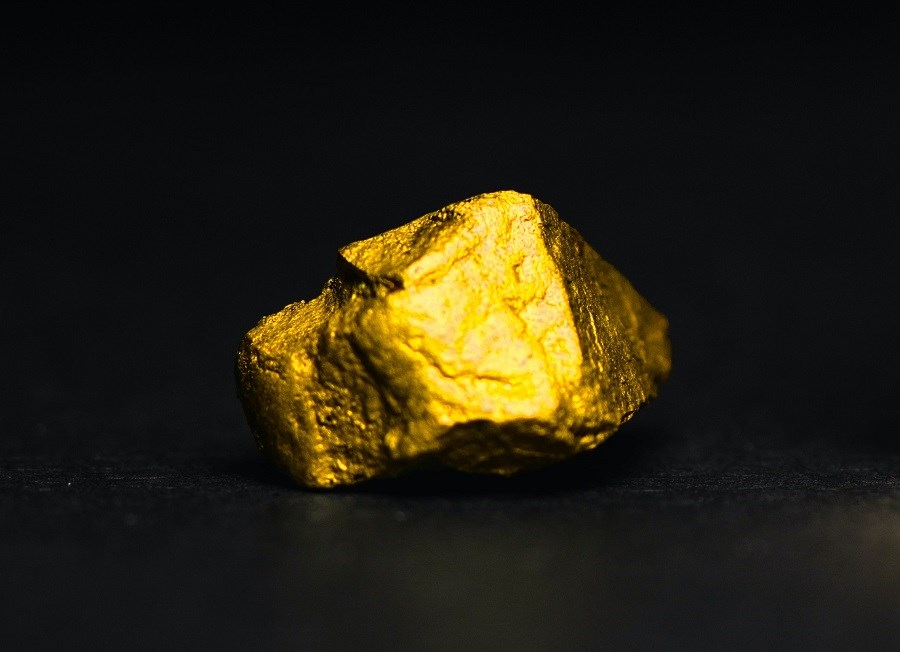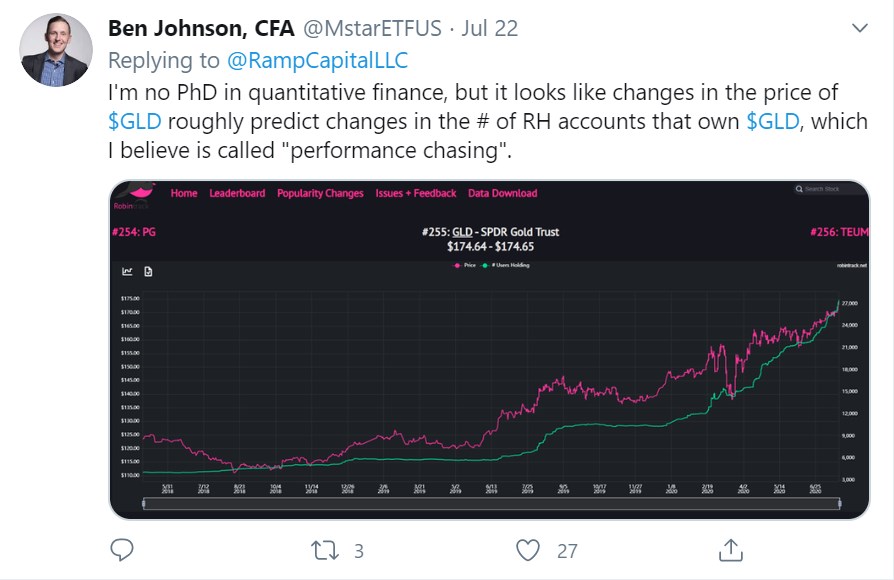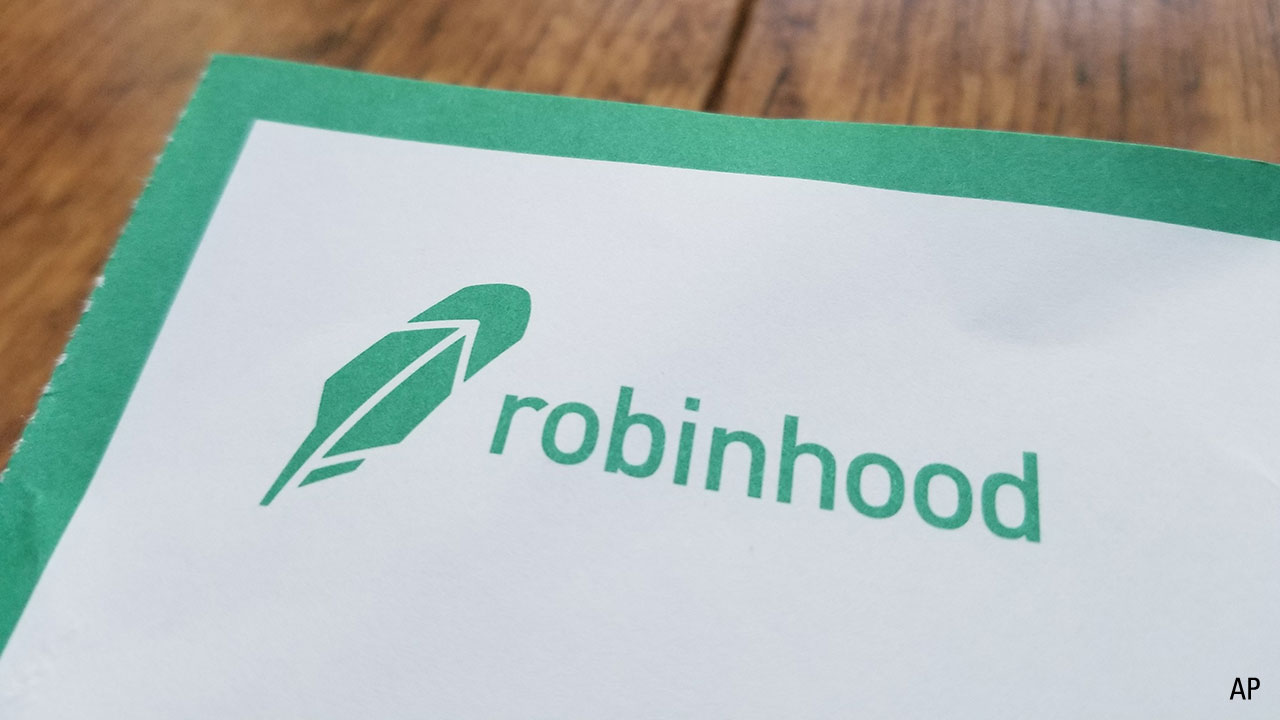
2020 has been marked by uncertainty. The market highs of February were followed by the coronavirus pandemic, and subsequent market volatility. As the world dealt with the COVID-19 lockdown, North America erupted with social unrest, as systemic racism once again reared its ugly head. In the middle of all this turmoil, investors sought a safe haven – and seemed to find it in gold.
Over the past week, gold has hit record highs, with spot prices hovering around US$ 1945 per ounce. Investors seem to love the metal and want to buy, but we think it is not a good idea to invest in gold. We even busted the myth that you need to invest in gold – you don’t. Commodities like gold have little intrinsic value. Returns are governed by the balance of demand and supply, with a fair amount of speculation thrown in. These factors are extremely difficult, if not impossible, for retail investors to predict, so the chances of success are extremely low.
None of this has stopped investors on apps like Robinhood, who seem to be trading the metal. Morningstar’s director of global exchange-traded fund research Ben Johnson tweeted a response that what the traders on Robinhood were doing is less ‘investing’ and more ‘performance chasing’.

It’s not just the metal itself, some estimates show that ETF holdings backed by gold have seen inflows for months now.
Why the Rise?
Morningstar’s director of base metal research Kristoffer Inton believes this is a perfect storm. “This rally is being driven by a perfect storm of somewhat uncertain events all happening together but generating significant demand for safe havens. China-U.S. tensions rising, the ongoing COVID-19 pandemic, U.S. political uncertainty—all this has driven investment demand to all-time highs,” he notes, adding that ETF-held gold has now hit all-time highs, which has driven the gold price to these levels.
“However, this rally is dependent on continued record levels of inflows. That means you have to have even more buyers than today to keep this rally going,” he says. He warns that what’s worse is that investment gold purchasers are going to want to sell at some point to realize gains or rotate into other assets. “So when investment sentiment turns, we’re going to see a flood of recycled gold weigh on gold prices in the market. Gold prices are significantly above the marginal cost of production, as this level of demand is requiring existing holders to sell their holdings to meet the surging investment demand,” he adds.
This does not bode well for a sustained rally in gold at these levels. Morningstar columnist John Rekenthaler in a recent column concluded that “If investing 10% in gold with a mainstream portfolio, use equities rather than bullion, because bullion lacks oomph. It is volatile by the standards of traditional investments but not enough to achieve the desired effect of diversification when used in a 10% dose. If investing 20% in gold, use bullion unless your risk tolerance is unusually high. Gold equities may lead to higher returns, but most will find the ride to be unduly bumpy.”
It’s Just Too Expensive
Here’s the problem, though, if you want to buy equities, Canadian gold producers are not cheap. In fact, the second and third most expensive stocks in our coverage universe are Canadian gold producers Barrick Gold and Kinross Gold.
| Name | Economic Moat | Moat Trend | Morningstar Star Rating | Fair Value Estimate |
| Barrick Gold Corp (ABX) | None | Stable | 1 | 1.82 |
| Agnico Eagle Mines Ltd (ABM) | None | Stable | 2 | 1.46 |
| Kinross Gold Corp (K) | None | Stable | 2 | 1.71 |
Inton expected this, noting that Canadian gold companies should enjoy significant free cash flow at these higher gold prices, which is what’s driven their rapidly rising share prices. “It’s notable that compared to previous gold rallies, we’re not seeing the miners going through a spending spree. This reflects hard lessons learned when gold prices rallied before and dropped thereafter, and miners then faced tough years of cutting back,” he adds.
To him, all gold miners look overvalued to us at this point, given that gold is more than US$1,900 per ounce and he forecasts midcycle prices of US$1,250 per ounce in today’s dollars. “No matter any individual operational improvements, their stocks are reflecting today’s high price in perpetuity. So a correction in gold prices would drive a drop in their share prices. Investing in gold miners is a levered bet on the gold price. When gold prices rise as they have, gold miners are going to rise by more. But it cuts both ways—when gold prices drop, gold miners are going to fall by more. Having a view on where gold prices go from here is going to be very important before buying any gold mining stocks,” he warns.






















